Member states of the International Atomic Energy Agency (IAEA) begin a week-long meeting today focused on the debate over Iran's nuclear programme, at a time when it threatens to become the casus belli in a new Middle East war.
A day after President Obama told the main American Jewish lobby it was time for a pause in the near constant sabre-rattling of recent months while stressing that the US would use force if it deems it necessary, the outcome of the IAEA board of governors meeting will help set the tone for the next few tense months.
The quarterly meeting at the agency headquarters in Vienna will also assess nuclear issues in Syria and North Korea as well as performing some IAEA housekeeping duties, but the gorilla in the boardroom today and for most of the week will be the report by the agency's director general, Yukiya Amano, on Iran's compliance or lack thereof.
That report, which leaked some days ago, follows a visit to Tehran by a team of IAEA officials last month, which did not go well.
The team went to Tehran for the second time in less than a month in search of answers to questions the IAEA has on evidence, supplied by other member states and collected by its own experts, that suggests that Iran had a significant weapons design programme in the past, and may have continued experimentation in low-key ways, like computer modelling, in recent years.
Although Tehran had signalled that it was ready to discuss the IAEA's concerns, the agency team, led by the deputy director general, Herman Nackaerts, made no real progress over the course of the two visits. Nackaerts asked to go to Parchin, where the IAEA wants to investigate satellite imagery of a large steel vessel being installed in 2000 of a sort which could be used for explosive testing of warhead components. But the request was turned down on the grounds that Parchin was a military site and it takes more time to get permission.
Nackaerts team also wanted to find out about the activities of Vyacheslav Danilenko, a Ukrainian-born scientist who worked in the Soviet weapons programme and who lectured in Iran from 1996 to 2002. Danilenko, who is referred to in IAEA reports simply as 'the foreign expert', told the agency that he was helping the Iranians make nano-diamonds using the same implosion techniques employed in nuclear warheads. The inspectors wanted to see some of the fruits of his labours and interview some of his students but were told that no such materials or personnel were available.
The Nackaerts team also asked for a Iranian statement on the evidence of possible military dimensions of the country's nuclear programme, but only received a blunt point-by-point rebuttal of the 65 concerns the agency raised in its last report, in November last year. In previous discussions, Iranian officials acknowledged having carried out some of the experimentation mentioned by the IAEA but insisted it was for non-nuclear purposes. This time, Tehran rejected every scrap of evidence as a fabrication.
At the same time, the IAEA found that Iran had tripled its rate of production of 20%-enriched uranium, and is doing much of it in a heavily-protected site dug under a mountain at Fordow. That is a matter of concern as it is much easier to turn 20% uranium into weapons-grade (90%-enriched) uranium, should the Iranians choose to go down that route, that it is with 3.5% uranium - the kind used in nuclear power reactors that Iran has been producing until recently. Iran says the 20% material is intended for use in its research reactor. The inspectors pointed out that the country already had more than enough for use in its research reactor in Tehran for the production of medical isotopes, but the Iranians claimed they were going to build five such reactors.
Furthermore, the IAEA discovered that in the three months since the last report, Iran had dramatically accelerated its installation of centrifuges, bringing 2,600 more into production.
Washington, London and Paris are hoping that these developments, in defiance of UN Security Council resolutions, will be enough to persuade Russia and China to agree to Iran's referral to the council once more for further punitive sanctions. However, there are reasons to believe that will be a hard sell in Vienna this week.
The freshly re-elected Russian president, Vladimir Putin, said on the day the IAEA report was leaked that he suspected the nuclear issue was being used as a vehicle for 'regime change' in Iran. Moreover, there is a 'glass-half-full' interpretation of the new IAEA report, that suggests that the Iranian programme is not progressing quite as fast as Tehran's boasts and Israel's claims suggest.
The thousands of centrifuges Iran has newly installed are all early model IR-1's, using technology that is half a century old. It is clear from the report that Iranian efforts to develop more advanced centrifuges that could enrich uranium much faster, have so far been a failure. As one Vienna-based diplomat familiar with the IAEA investigation said: "They have been working for years on IR-2 and IR-4's and they have not yet run a full cascade [an array of 164 centrifuges] with these second-generation centrifuges, or at least not for a long time."
Iranian claims to the IAEA that it would soon be testing IR-5's and IR-6's "is another way of saying that its IR-2's and IR-4's haven't worked", another diplomat said. Reports published before the IAEA Tehran visit, suggesting that Iran would imminently install new generation centrifuges at the underground site of Fordow - cited as a 'red line' by some Israeli officials - turned out to be groundless. All the centrifuges at Fordow are clunky old IR-1's.
Furthermore, Iran's centrifuge development appears to have been fast but not deep. Some 2,600 new centrifuges have quickly been brought on-stream at the main enrichment centre in Natanz, and are being fed with uranium hexafluoride gas, but as an analysis by the Institute for Science and International Security (ISIS) suggests, they are not working particularly well. And while more than 6,000 centrifuge casings have been installed at Natanz, it is far from clear that Iran has sufficient materials to put the working parts in those casings in the near future.
In short, there is evidence of a rush by the Iranian authorities to create facts on the ground that make it look like they have achieved more than is actually the case. This may reflect the urgency of harried technicians trying to keep up with the pre-election boasts of President Mahmoud Ahmadinejad, but it may also be an attempt to establish a strong bargaining position in anticipation of serious negotiations. The regime has said it is ready for new talks, although a time and a venue have yet to be agreed.
So while the IAEA board will convene today to consider an Iranian regime that is clearly intransigent and defiant, the Russian, Chinese and non-aligned countries will have plenty of material to point to in support of their arguments that there is still time for diplomacy and that the agency should refrain from taking dramatic actions that could be interpreted as a trigger for war.
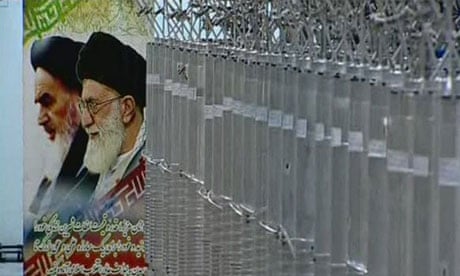
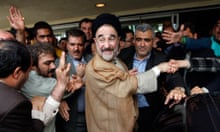
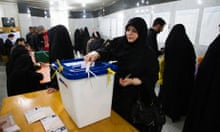
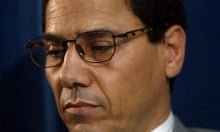



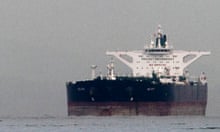
Comments (…)
Sign in or create your Guardian account to join the discussion